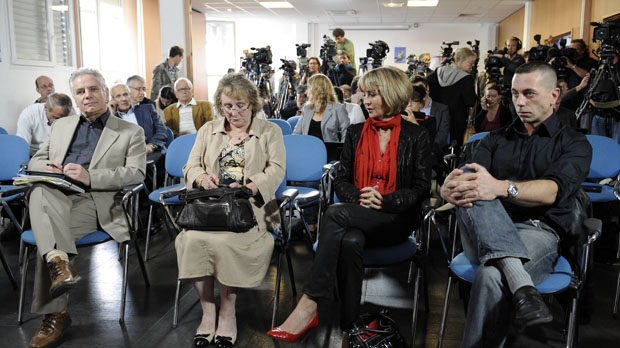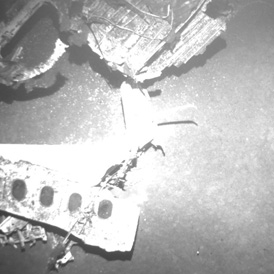Air France pilots ‘ignored warnings’ before fatal crash
French investigators say that the pilots of the Air France jet, which crashed into the Atlantic two years ago and left no survivors, ignored warnings and failed to follow basic procedures.

Families of AF 447 crash victims at the investigators’ press conference (Getty)
All 228 people on board the plane were killed in the crash and passengers were not warned as the pilots struggled to stop the plane going down in the early hours of 1 June 2009.
The investigators’ report into the final minutes of flight AF 447 from Rio to Paris found that the pilots failed to discuss “stall” alarms as the Airbus A330 plane plummeted 38,000 feet in three minutes, crashing into the ocean at 125 mph.
The textbook way to respond to an aerodynamic stall – a dangerous condition where the wings are not able to support the aircraft (which should not be confused with stalled engines) – is to point the nose down to catch air at a better angle. The report, by the Bureau d’Enquetes et d’Analyses (BEA), confirmed a finding in May that the crew responded to stall warnings by pointing the plane’s nose up instead of down.
Friday’s report sumarised data from the black box. This suggested that the 52-year-old captain had started a routine rest period just before the emergency began, and had left the cockpit without giving clear operational instructions to the 32-year-old junior pilot. The captain returned moments into the emergency when the plane was already in serious trouble.
The pilots of flight AF 447 had not been trained in “Unreliable IAS (indicated airspeed)” or manual handling of aircraft at high altitude, said the BEA.
Lawsuits
The report may cause Air France to clash with Airbus over whether faulty flight equipment or the pilots’ failure to respond to a stall were most to blame for the accident. Victims’ families have laid the foundation for lawsuits on both sides of the Atlantic.
“This is perhaps a way of BEA freeing the firms from their responsibility,” Olivier Morrice, a lawyer for the families of some vicitims told Reuters. “If there was not a failure of the pilot sensors, the pilots would not have been placed in such a complicated situation.”
Morrice called the report’s emphasis on the role of the pilots on the crash “very questionable”.

More training needed
France’s BEA authority issued 10 new safety recommendations aimed at avoiding a similar tragedy to the crash of flight AF 447. The recommendations include giving more training to pilots on flying aircraft manually. This is a skill that critics say has been negatively affected by the rise in computer-assisted flying technologies.
Unions say airlines force pilots to rely too heavily on push-button flying techniques that work only until something goes seriously wrong. They say that this is done to save costs.
The report did not blame the crew or the aircraft and its systems, but three of its recommendations focused on the way the plane is flown or crewed and one proposed adding an extra instrument to reinforce audible stall alerts.
There were also calls for black boxes to record video images of what pilots see. Unions believe that such a system could be misused.
An Air France statement said: “At this stage, there is no reason to question the crew’s technical skills.” They blamed “misleading stopping and starting of the stall warning alarm” for complicating the pilots’attempts to analyse the situation.
Paul Hayes, safety director at UK consultancy Ascend Aviation, said: “It seems obvious the crew didn’t recognise the situation they were in, for whatever reason, and more training could have helped.”
Crash investigators have said that there is little specific training in place to teach pilots how to deal with the stall of a commercial aircraft because it is such a rare event, especially at high altitude.
The first black box read-out in May saw blame pushed onto the Air France pilots. Union leaders denounced this, and will appreciate the calls for extra pilot training laid out in today’s report.